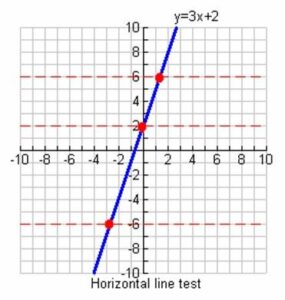Table of Contents
In relation to the original function f, the inverse function is represented by f-1 and the domain of the original function becomes the domain of the inverse function, and the domain of the given function becomes the domain of the inverse function. By swapping (x, y) with (y, x) with reference to the line y = x, the graph of the inverse function is obtained.
An inverse function, also known as an anti function, is a function that can be reversed into another function. In other words, if any function “f” takes x to y, then the inverse of “f” takes y to x. The inverse function is denoted by f-1 or F-1 if the function is denoted by f-1 or F-1. Here, (-1) should not be confused with an exponent or reciprocal.
If f and g are inverse functions, f(x) equals y if and only if g(y) equals x.
The inverse sine function is used in trigonometry to find the measure of the angle for which the sine function generated the value. For instance, sin-1(1) = sin-1(sin 90) = 90 degree. As a result, sin 90 degrees equals 1.
To be considered an inverse function, each element in the range y ∈ Y must be mapped from some element x ∈X in the domain set, and this is known as a one-one relation or an injunction relation. Also, the given function’s inverse f-1 has a domain y ∈Y that is related to a distinct element x ∈ X in the codomain set, and this type of relationship with reference to the given function ‘f’ is an onto function or a surjection function. As a result, the inverse function, which is both an injunctive and a surjection function, is referred to as a bijective function.
Definition
A function takes in values, performs specific operations on them, and produces an output. The inverse function is in agreement with the resultant, operates, and returns to the original function. The inverse function returns the original value from which the output of a function was obtained. When it comes to functions, f and g are inverse, meaning that f(g(x)) = g(f(x)) = x. The original value is obtained by a function composed of its inverse.
An inverse function can be obtained by swapping the roles of the independent and dependent variables in a given function. Inverse functions do exactly what their name implies: they reverse a function’s action to restore a variable to its original state. Thus, if there exists a function g(y) for a given function f(x) such that g(f(x)) = x and g(g(y)) = y, then g is called the inverse function of f and is denoted by the notation f−1, where the variables are interchanged by convention. The function f(x) = 2x, for example, has an inverse function f−1(x) = x/2.
Inverse Function Graph
The graph of the inverse of a function reflects two things: the function and the inverse of the function, which is drawn over the line y = x. This graph line passes through the origin and has a slope value of one. It can be written as follows:
y = f-1(x) which is equivalent to f = x (y)
This relationship is similar to y = f(x), which defines the graph of f, except that the parts of x and y are reversed. So, if we want to draw the graph of f−1, we must swap the positions of x and y on the axes.

FAQs
What exactly is the inverse function?
An inverse function is one that returns the original value for which the output of a function was given. If f(x) is a function which gives output y, then the inverse function of y, i.e. f-1(y) will return the value x.
What Is the Inverse Function of a Trigonometric Function?
Finding the inverse function of a trigonometric function with algebraic expressions is similar to finding the inverse function of a normal function.
What Is an Inverse Function's Domain and Range?
By swapping the domain and range of the given function, the domain and range of an inverse function are obtained. The domain of the given function is transformed into the range of the inverse function, and the range of the given function is transformed into the domain of the inverse function.






